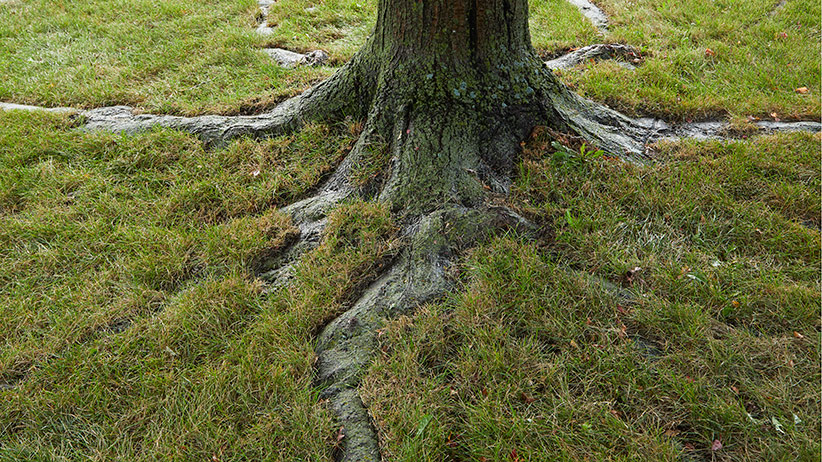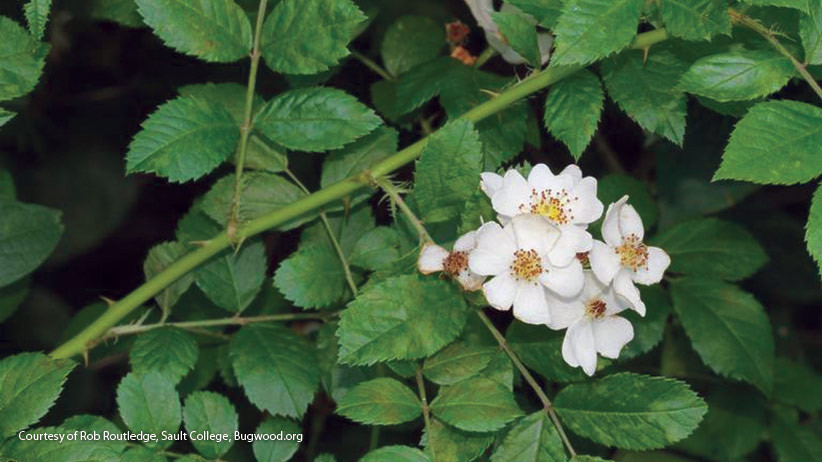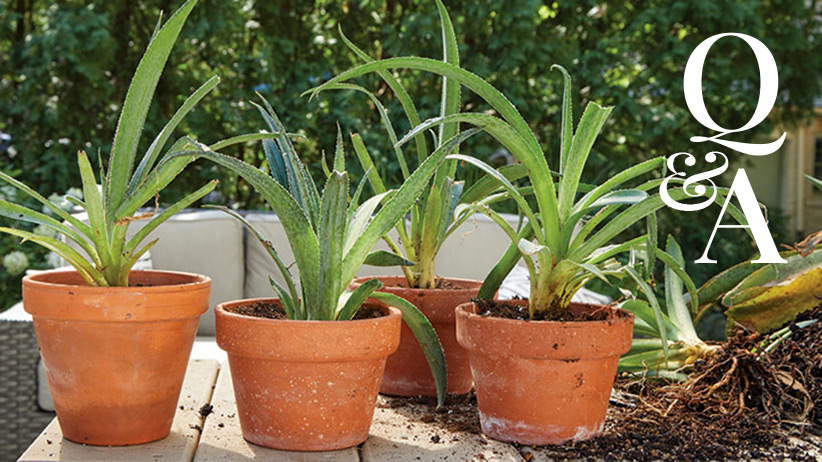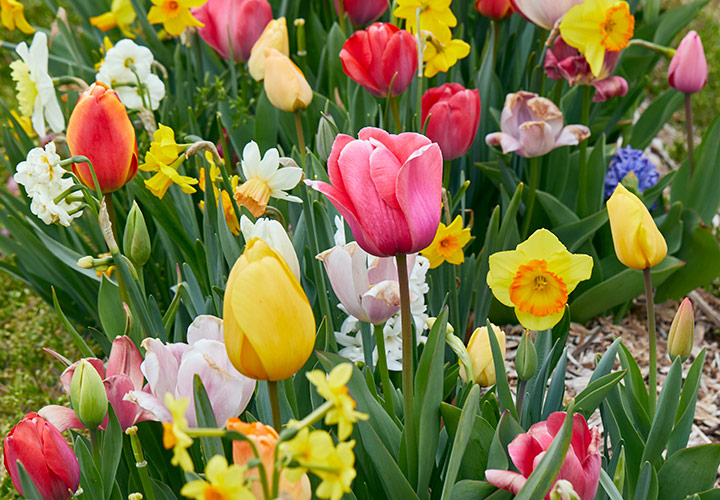
Planting bulbs
There’s more to fall gardening than just raking leaves. It’s also the perfect time to prepare for a gorgeous spring by planting bulbs. For the most part growing bulbs is super simple. But if you’ve ever been disappointed in your bulbs’ performance or haven’t planted them because you weren’t sure where to start, help is here. We’ll share some expert tips on how and where to plant, what tools to use and how to solve pest problems.
The word “bulb” is often used to describe a plant, even when it technically grows from a corm or a tuber. To keep things simple, I’ll call them all bulbs as I share a few tips for planting bulbs this fall that will ensure success next spring. Let’s get started!
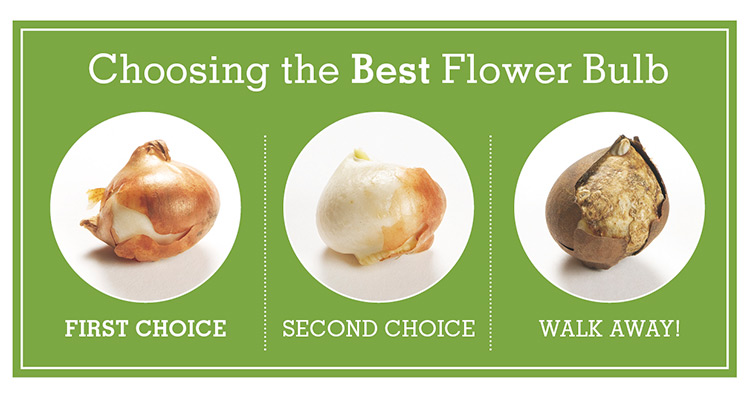
How to choose a healthy flower bulb
There are lots of bulbs at the garden center in fall but you have to be careful about which ones you bring home. A good bulb grows into a strong, healthy plant while a poor-quality one produces a spindly plant, if it grows at all. Here’s how to choose the best:
First choice bulb
- Big — it’ll give you more and bigger flowers
- Heavy — it has more stored energy
- Unblemished — it’s healthiest
Second choice bulb
- No damage, but the papery tunic may be missing
- Just a few small blemishes
- A little bit of fuzzy mold that wipes off easily
Don't Buy!
- A dry, shriveled or lightweight bulb — it’s lost moisture and won’t recover
- Soft spots — these mean rot
You Might Also Like:
Best Places to Order Bulbs Online
Bulb Planting Calculator: How Many Bulbs Do You Need?
Spectacular Spring Bulb Garden
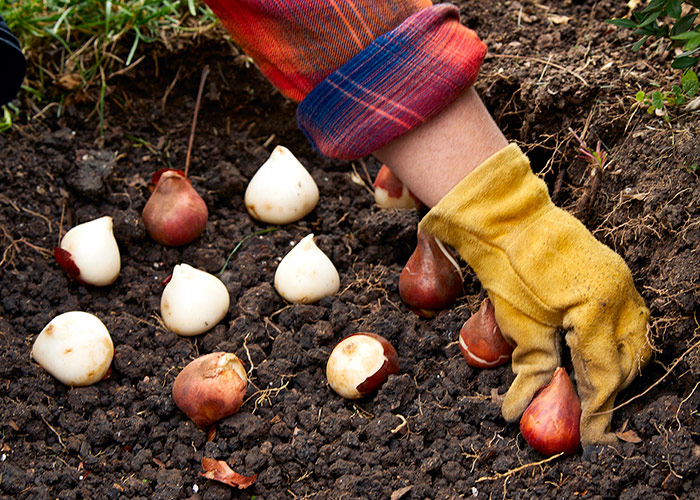
Bulb planting basics
Jo-Anne van den Berg-Ohms grew up around the mail-order bulb business her dad started in the 1950s; now she’s the CEO of both John Scheepers and Van Engelen mail-order bulb companies and has plenty of experience and advice to share:
Best place to plant bulbs
A spot with full sun that doesn’t get a lot of additional water in summer
is best for most spring-blooming bulbs if you want them to return year after year. Tulips are probably the most finicky and don’t do well planted in annual beds or with thirsty perennials. Choosing the right varieties helps, though.
Soil
The best soil for bulbs is well-drained with a neutral pH — sandy loam is ideal. It allows for strong root growth and water drainage so the bulbs don’t rot.
By the way, don’t bother adding bone meal to the hole at planting time. It isn’t very nutritious, can burn or kill newly emerging roots and may even attract animals that might dig up the bulbs. Instead, apply a granular organic plant food with a 5-10-5 formula to the soil’s surface after refilling the planting hole.
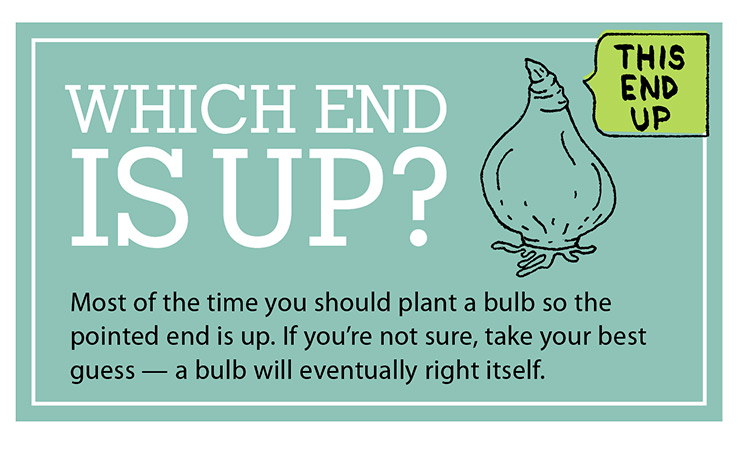
Which side of the bulb is up?
Planting a bulb with the growing tip up and the flat basal plate down helps conserve energy since it doesn’t have to correct course. But sometimes it’s hard to tell which end to put where. If you’re not sure, just plant the bulb on its side and it will grow the right direction.
Best time to plant bulbs
Buy your bulbs as early as you find them in stores. But that may be too soon to plant, so keep the bulbs in a cool spot, such as a basement that stays at
55 to 65 degrees. Get bulbs in the ground in fall once soil temperatures are 55 degrees F — Jo-Anne knows the time is right when nighttime temperatures have been in the 40s for a couple of weeks. These cooler temperatures trigger a biochemical response, called “vernalization,” in the bulb that tells them to stop growing roots and settle in for the winter.
When to plant bulbs in the North
Give bulbs in northern gardens — USDA zones 3 to 7 — some time to put down a few roots by getting them in the ground between September and November. The further north you live, the earlier you’ll want to plant.
When to plant bulbs in the South
November and December are when you plant bulbs in the South. But in USDA zones 8 to 10, many traditional fall-planted bulbs don’t do well — they need cold temperatures to grow and flower. Spend the extra money to buy prechilled bulbs from a nursery or prechill bulbs yourself in the fridge for 8 to 10 weeks starting in October.
Don’t want to bother with prechilling bulbs? Try these bulbs that don’t need chilling:
- Daffodil Narcissus spp. and hybrids
- Snowdrop Galanthus nivalis
- Spanish bluebell Hyacinthoides hispanica
You Might Also Like:
Spring Garden Talk & Tour in Memphis
Companions for Spring Bulbs
Best Daffodils for Your Region
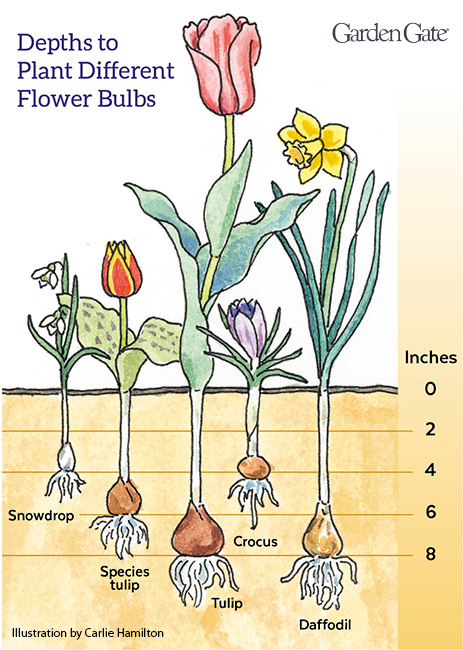
How to plant bulbs: proper depth
Most bulbs will do best with a planting depth of 3x their height. This depth keeps temperatures even, which encourages the bulb to form strong roots and flowers. It also ensures that the bulb responds at the right time of year, going dormant in fall and emerging in spring at the appropriate time. You may want to plant an inch or two deeper if you experience extremely cold winters. Southern gardeners can plant their bulbs on the shallow side.
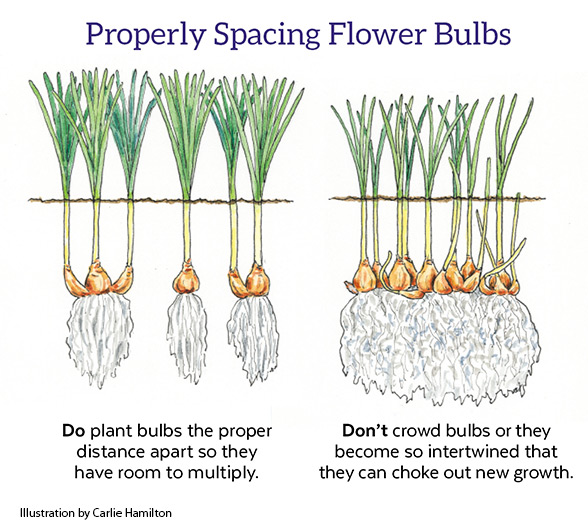
Spacing matters when you plant bulbs
You can usually find how far apart to plant bulbs on the package or from the nursery where you bought them. Getting this right makes a big difference in the bulbs’ health and less work for you in the long run. The illustration above shows how crowded bulbs struggle and compete for resources, resulting in weak growth. If you’ve noticed that flowering has declined in an established clump, it could be overcrowded; dig and divide them in fall.
Be sure to water & mulch
After planting, soak the planted area to settle the pockets of air. Most spring bulbs like moist soil as they establish roots and when they bloom. But they’ll rot if they are wet while they’re dormant.
Fluctuating temps can be hard on tender new roots, so mulch the area with straw, wood chips or compost to keep the soil an even temperature.
You Might Also Like:
Classic Spring-Flowering Bulbs
Find the Right Bulb for Your Garden
Watch Our Gardening Videos on YouTube
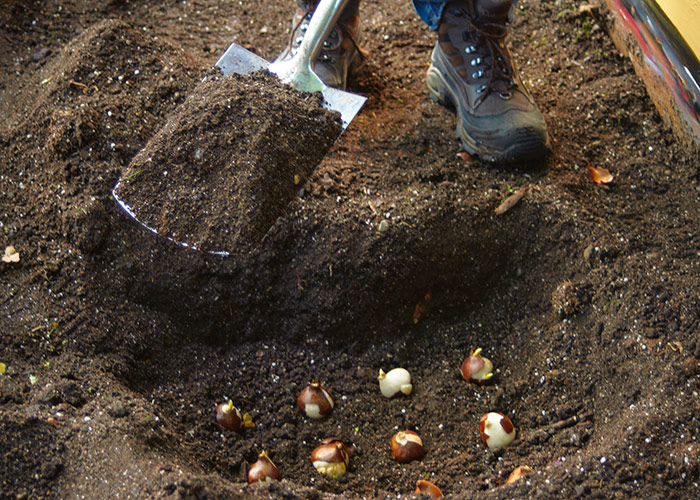
Bulb Planting Tools
Depending on how many bulbs you have to plant, the correct tool can make the job go much smoother and faster. Here are some tools that are perfect for planting spring-flowering bulbs. See an expanded guide on bulb planters here.
Shovel
A square shovel is best for mass plantings in a trench like the one above. Dig out the area to the required depth (usually three times the height of the bulb) and set the soil aside in a wheelbarrow or on a tarp so it’s easy to scoop back into place. Set the bulbs in the trench, then refill with soil. You can layer different types of bulbs, too. Put large bulbs like tulips or daffodils at the bottom. Add soil back in until the trench is the right depth for smaller bulbs. Pop them in and finish refilling!
Shovels We Recommend:
Truper 48-Inch Square Point Shovel, Long Handle
Fiskars Steel D-Handle Flat Square Garden Spade
Soil Knife
Use a soil knife if you only have a few small bulbs to plant and your soil is loose and soft. The job will go quickly and you can wiggle bulbs into tight spaces between other perennials. Look for a soil knife with measurements etched on the blade to easily determine the planting depth.
Soil Knives We Recommend:
A.M. Leonard Deluxe Soil Knife & Leather Sheath Combo
Fiskars Big Grip Soil Knife
Bulb Planter
When you have a bunch of bulbs to plant or are naturalizing into sod, try a bulb planter. Available in hand-held or long-handled stand-up variations, this tool pulls a core of soil out just the right size to drop a bulb into, then plug the core back on top of the bulb and pat in to plant.
Bulb Planters We Recommend:
Short-handled bulb planter
Long-handled bulb planter
Bulb Auger
For planting lots of bulbs in tough soil, invest in a bulb auger: It’s an attachment that fits on your ordinary household drill, and it moves soil out of the hole so you can plant quickly and easily. It works well with two people — one can drill, while the other drops in the bulbs and covers them.
Bulb Augers We Recommend:
Bulb Auger Attachment
Long-Shafted Augers









